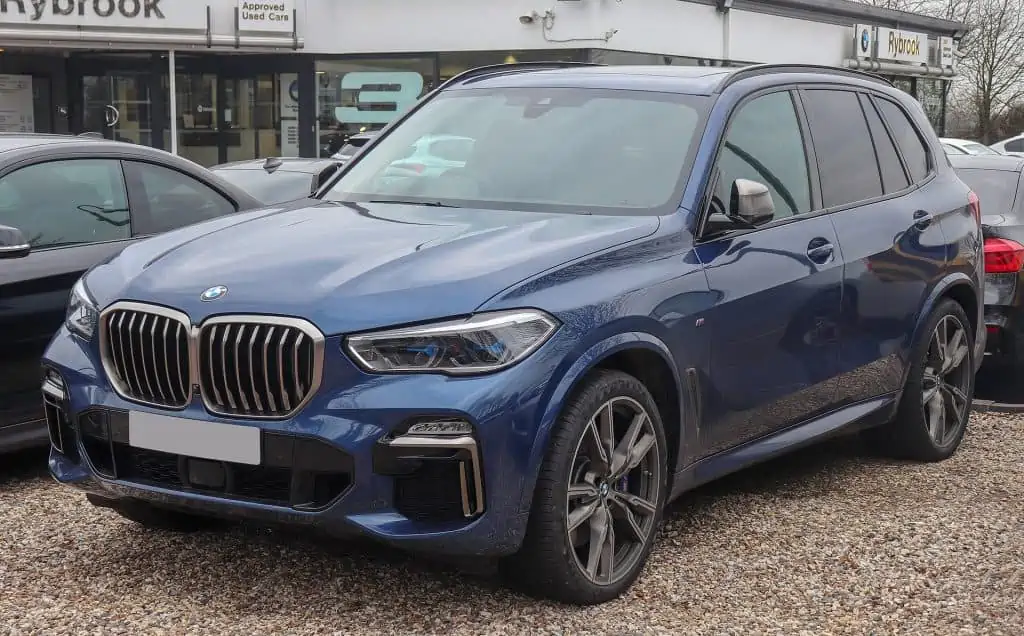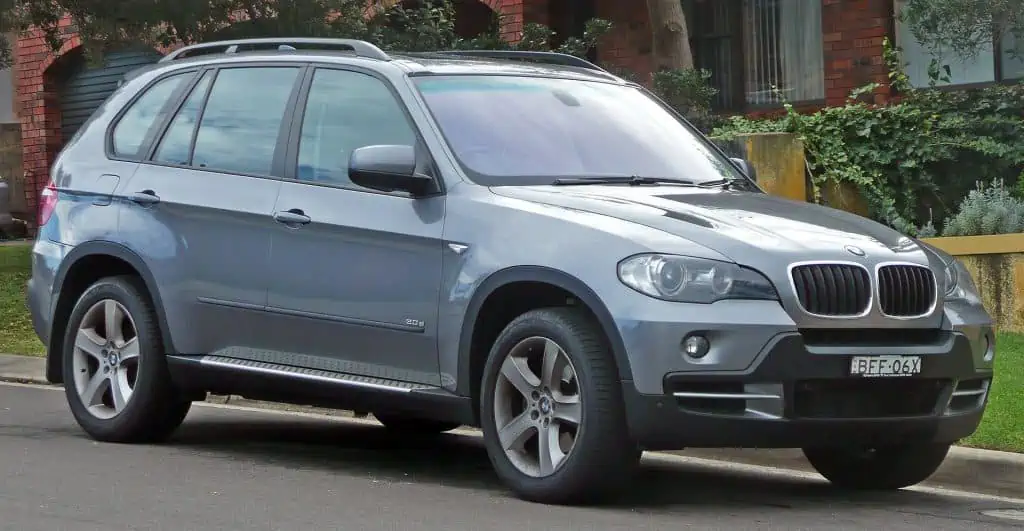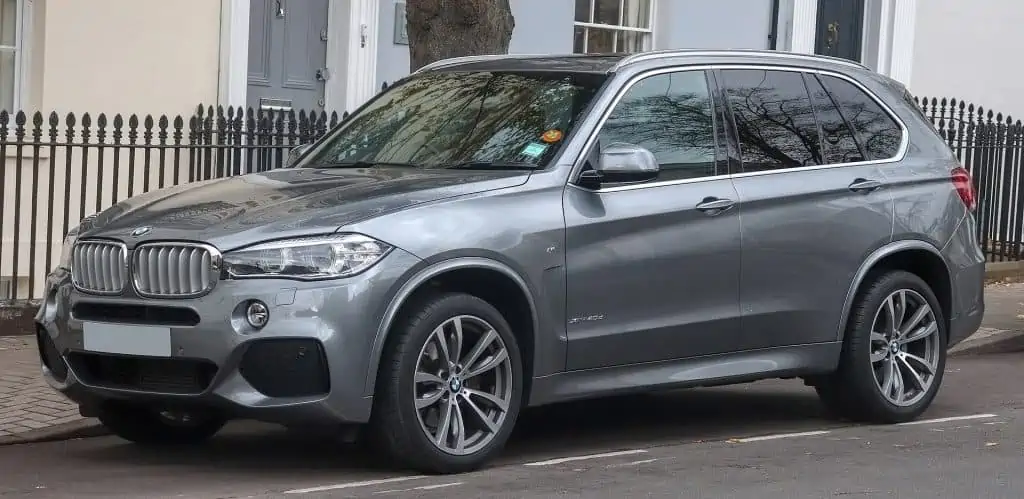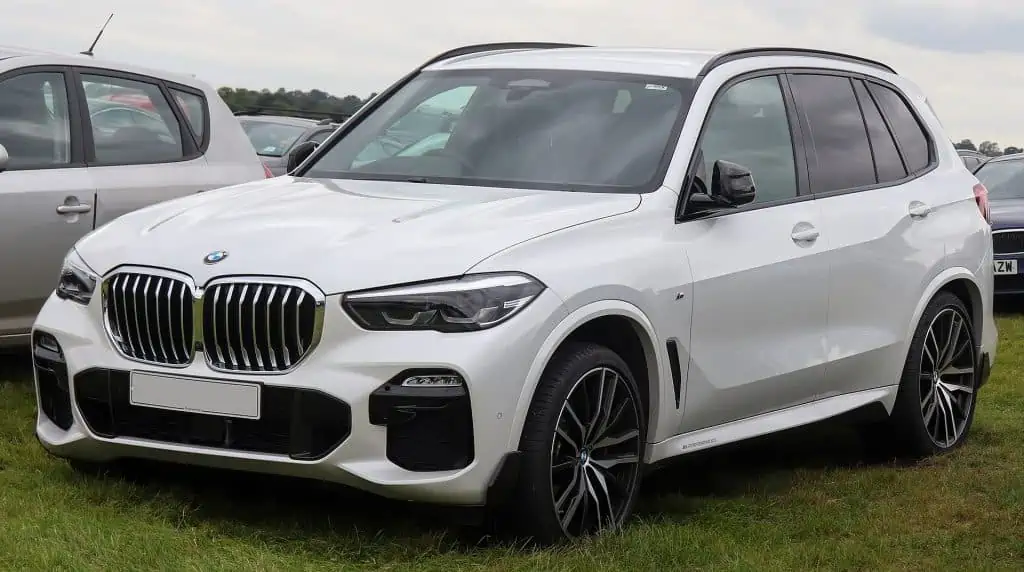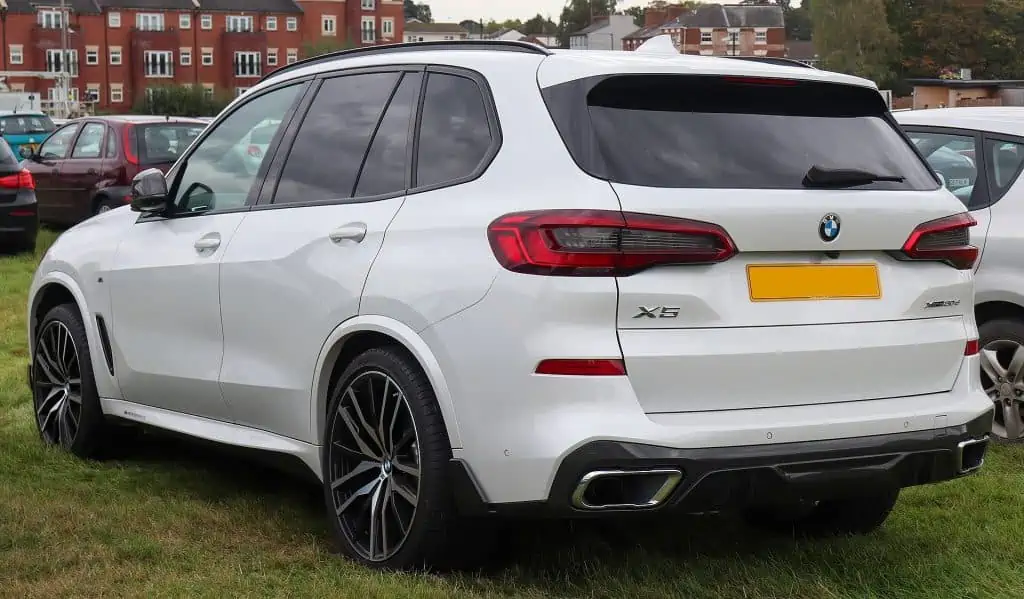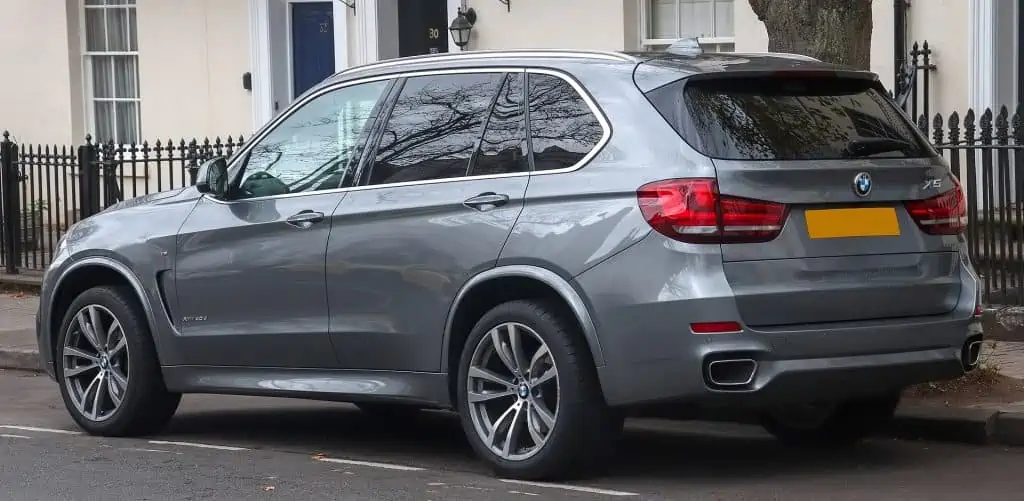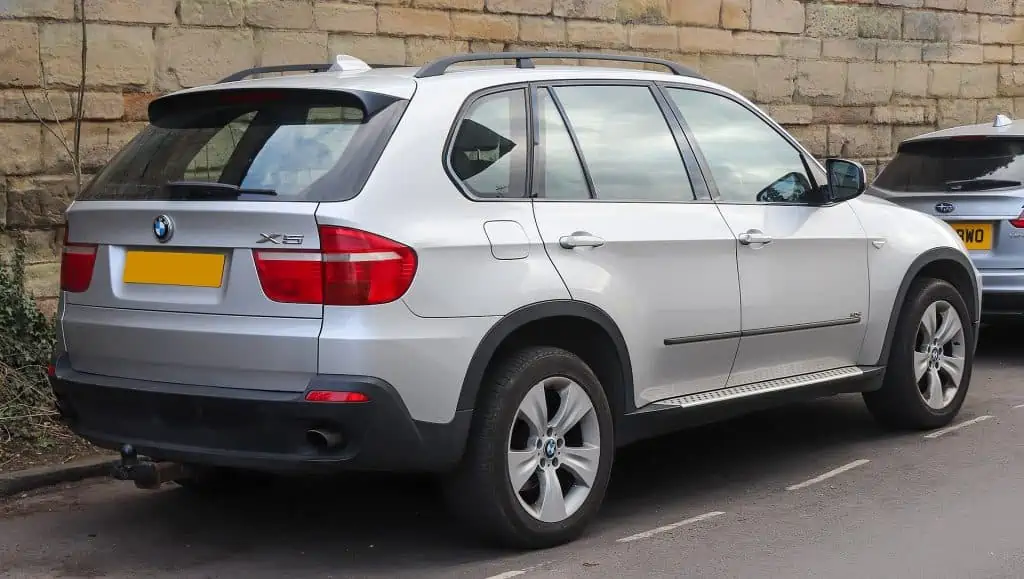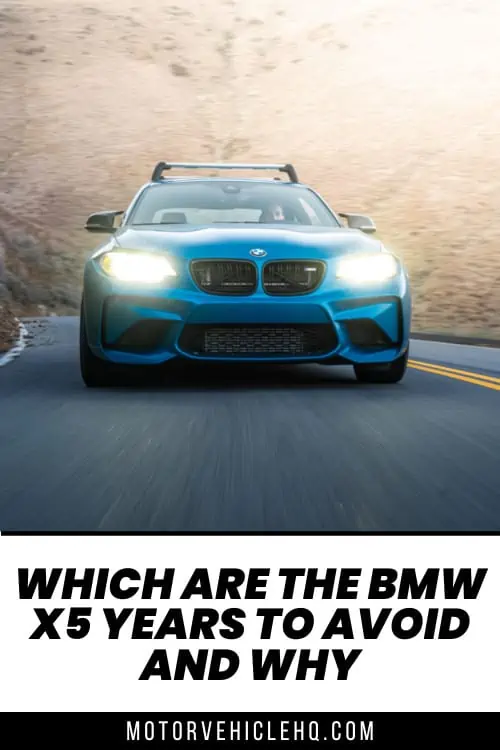Many luxury car enthusiasts would never dream of buying a used automobile, especially when it comes to premium cars. Then there are used automobile buyers who can’t see themselves behind the wheel of a fancy vehicle.
It turns out that buyers of luxury cars frequently choose the BMW X5. You must read on if you want to purchase a used BMW X5. The BMW X5 years to avoid, as well as the ones that are secure to purchase secondhand, are given below.
If they were in the market for a luxury car, many enthusiasts would never think of buying a used one. Then there are used car purchasers who don’t want to possess a luxury vehicle.
In the event this is the case, is there a market for used premium vehicles like the BMW X5?
The X5 luxury SUV from BMW is a well-liked option among purchasers. Continue reading if you’re thinking of buying a used BMW X5. In this post, we’ll discuss which BMW X5 years to avoid, why you should stay away from them, and which ones are secure to buy used.
Which are the BMW X5 Years to Avoid and Why Should You Avoid Them?
To rapidly respond to your query, the following list of BMW X5 years to avoid buying:
2019 BMW X5 by Vauxford / CC BY-SA 4.0. The six-cylinder engine in the BMW X5 has sufficient power, and its quickness and easy shifting make it suitable for daily commuting.
- The BMW X5 years to avoid 2008
- The BMW X5 years to avoid 2009
- The BMW X5 years to avoid 2012
- The BMW X5 years to avoid 2013
- The BMW X5 years to avoid 2014
The BMW X5 Years to Avoid 2008
According to CarComplaints, there aren’t many concerns about the 2008 BMW X5. Water entering the inside, coolant pump failure, and power loss while driving are the top three issues with it.
The water seeping into the SUV’s interior is the main cause for concern. The study claims that the electrics were flooded because the water in the drain tubes wasn’t properly evacuated. It will cost you close to $10,000 to remedy this. However, we’ve discovered that this specific issue was only caused by one Car Complaints complaint, so take that as you’d like.
You should also watch out for issues like power loss when driving. The recommended fix calls for changing the battery and alternator, which can cost up to $2,000.
The BMW X5 Years to Avoid 2009
According to CarComplaints, the 2009 BMW X5 is far from being a troublesome premium SUV with just 200+ NHTSA complaints. It does, however, have a few problem areas, such as oil leaks and melted brake lights.
Oil leaks are rather prevalent, even though Car Complaints only have two complaints about them. One customer said that he had two significant oil leaks, and the dealership demanded $5,000 after claiming that the problem was with the alternator bracket and timing covers.
The melting taillights are another noticeable problem with this year’s X5. This poses a serious safety risk and illuminates the warning lights on the dashboard.
The BMW X5 Years to Avoid 2012
According to CarComplaints.com, there have been 12 recalls and over 300 NHTSA complaints for the 2012 BMW X5. Once more, the issues are far from serious, and the main worries are only being raised by a small number of complaints.
The car rattles anytime it turns, which is likely a transmission-related issue, according to one owner, making it the most notable defect. After deducting the 20% dealer coverage, the X5 owner claims that BMW wanted to replace the transfer case and requested $4,000 from him.
The 2012 X5 is also prone to brake light issues, much as the 2009 model. Water damage to the rear inner brake light assembly might cause the deterioration of the LED connections.
The BMW X5 Years to Avoid 2013
Consumer Reports gave the 2013 BMW X5 a low dependability rating of 1 out of 5, making it one of the worst model years to stay away from. There are just too many issues with the 2013 X5 that is negative.
The 2013 X5 has a gasoline system that is full of issues, according to several owners. According to one owner, the gasoline pump malfunctioned and even started to fall apart, leaving debris in the fuel system.
Additionally, several customers claimed that stalling and power loss necessitated the replacement of the fuel injection system.
With this X5 year, oil leakage rears its ugly head once more. Many customers complained that their SUV was either using excessive amounts of oil, leaking everywhere, or both.
2002 BMW X5 Sport (E53) by Vauxford / CC BY-SA 4.0. For a 2002 BMW X5, the thermostat might malfunction, causing the engine to overheat and/or turn on the check engine light. To address this issue, a new thermostat must be installed, and the cooling system must also be thoroughly examined.
The BMW X5 Years to Avoid 2014
The BMW X5’s second year isn’t all that much better. The 2014 BMW X5 received a further 1 out of 5 dependability ratings from Consumer Reports.
Looking at what consumers at Consumer Reports had to say, several mentioned 2014 X5 body integrity problems. One user reported roof-to-floor water leaks that were dripping onto the floor of the driver’s side.
Additionally, a lot of people complained that the car makes unpleasant squeaks and rattles, saying that this is inappropriate for a luxury model.
Other troublesome components are the suspension, fuel system, minor and main engine, and electrical system, all of which received a score of 1 out of 5 from Consumer Reports.
Which Model Years of the BMW X5 are Safe to Buy?
Let’s move on to the BMW X5 models that are probably safe to purchase and used now that you’ve seen the worst years to avoid.
Best Year BMW X5 2016
For buyers of used luxury vehicles, the 2016 BMW X5 is a solid choice with a dependability rating of 4.5 out of 5. The 2016 model year is a terrific representative of the X5 series, with top-notch features, brisk handling, and exceptional driving quality.
The 2016 model’s extreme tire noise is a widespread issue, although most consumers don’t care about it.
Best Year BMW X5 2017
The 2017 X5 gets a dependability rating of 5 out of 5, according to Consumer Reports, which is another triumph for BMW the following year.
There isn’t much to say about 2017 X5’s dependability problems aside from allegations of brake squealing and a malfunctioning climate system. The 2017 BMW X5 is a year you can purchase secondhand with confidence.
Best Year BMW X5 2021
The 2021 BMW X5 is a great choice if you’re wanting to purchase a relatively fresh used luxury SUV even if it’s not precisely an old model. Its accolades have been shouted by critics throughout the web and for good cause.
In addition to receiving a flawless dependability rating from Consumer Reports, the 2021 X5 also received a score of 77 out of 100 for Quality and Reliability from J.D. Powers. The capacity of BMW to pay attention to consumer comments and act to address the problems seems to have reached its peak this year.
BMW X5 Years to Avoid: The 8 General Issues with BMW X5
If you’re looking for a quick, moderately sized SUV with dynamic handling, the BMW X5 is a fantastic choice. Driving a BMW is a delightful experience.
The X5 has a smooth and powerful engine, as well as a ton of cutting-edge features and cutting-edge technology.
Some of its models are more prone to problems than others, just like any other vehicle. This article examines eight typical problems with the BMW X5.
2007 to 2008 BMW X5 (E70) by OSX. After 60,000 miles, valve cover gasket leaks are frequent. Oil dripping from beneath the car and the smell of burning oil coming from the engine compartment are signs of an issue.
1. A Water Leakage Issue
One of the most popular features of the BMW X5 has both advantages and disadvantages. Unfortunately, there are certain sunroof-related water leak problems with the 2008 BMW X5.
On the bright side, it allows for ample ventilation within the car and can be opened to let in sunshine.
However, there is a drawback as well: the sunroof enables outside water to enter, which destroys the interior of the car. Normally, drain tubes prevent water from collecting on the sunroof. But several 2008 BMW X5 cars have tubes that can let water into the interior.
A drenched vehicle carpet could need to be replaced if it is damaged, unlike a wet floor mat, which is an inconvenience.
Some owners have also mentioned that the electrical system has been ruined and water regularly leaks into the front passenger seat.
The ignition system may have been damaged as a result of the water leaks, making it impossible for the 2008 BMW X5s to start. The electrical door locks on a lot of cars were stuck, making it impossible for the drivers to get in or out.
When the interiors of several of the SUVs dried off, they went back to their previous states.
However, replacing the electronic components and their electrical parts is usually necessary.
2. Problems with Engine Stalling
The 2011 BMW X5 is a pleasure to drive because of its power and agility.
On the other side, a sudden engine stall might sour the driving experience. This problem, which affects some 2011 models, is seen to be the BMW X5’s most significant shortcoming.
Although the car may stall at far greater accelerations, certain BMW X5 cars are stuck at modest speeds, and this happened frequently at low accelerations.
The owners hauled their BMW X5 because stopped engines could not be restarted.
BMW acknowledged that the 2011 BMW X5’s engine has a defect that caused it to unexpectedly stall or seize. The engine control module switched on and the safe mode was triggered when the engine stopped. Depending on the circumstances, the engine warning light could or might not come on.
The majority of BMW X5 owners couldn’t fix the problem, and many had to replace the engine entirely. It led to a substantial financial loss.
3. Issues with Overheating of the Engine
The 2013 BMW X5’s powerful engine maintains its coolness even when the engine is running at full throttle thanks to its electronic water pump.
On the other side, a broken water pump might start the backup fan, which may keep running after it is no longer needed.
The 2013 BMW X5 is not the only vehicle affected by this issue.
Several 2011–2012 models are now experiencing this problem as well. It’s crucial to get a bad pump fixed right away to prevent damage from the engine heating up and functioning for too long.
4. Transmission-Related Problems
The BMW X5 gearbox supplies the engine with the right amount of power to keep the SUV operating. Driving the SUV becomes noticeably more difficult if one of its components breaks.
2016 BMW X5 by Vauxford / CC BY-SA 4.0. With a 4.5 out of 5 reliability rating, the 2016 BMW X5 is a good option for purchasers of used luxury cars.
The BMW X5’s safe mode can be activated in the case of a major transmission breakdown, allowing it to run at a reduced performance level to avoid any damage.
Some BMW X5 models from the 2011 model year may have a mechatronic sensor collapse without any warning. Without acknowledging the inputs from this sensor, the transmission may alter.
There have been other gearbox problems with the BMW X5. Some 2012 BMW X5 cars develop vibration issues as the transfer case wears out.
Many 2006 BMW X5s can abruptly change gears when moving at a modest pace, and fixing these gearbox issues might be expensive.
5. Issue with Engine Misfires
When the combustion process fails and the engine cylinder does not fire, this is known as a misfire. Both while the engine is starting and when it is idling, misfires might form.
The engine may stumble for a while and occasionally lose power when it misfires.
This is a common problem with the BMW X5. But locating this problem is straightforward. The engine will idle down or generate a rumbling sound if it’s misfiring.
Typically, an intake actuator component is at fault for this. To maintain the BMW X5’s operations efficiently, the problem can be fixed by simply replacing the problematic component.
6. Recurring Leakages of Oil
The BMW X5 experienced an oil leaking issue with both the 2009 and 2013 versions.
Oil leaks in vehicles are now a frequent issue on many automotive forums. According to reports, the owners have dealt with significant oil spills.
Other customers complained that their SUV was either leaking everywhere or burning too much oil. After changing the faulty timing covers and alternator bracket, the issue was resolved.
7. Powertrain Problems
Numerous complaints regarding the 2021 BMW X5 Hybrid’s powertrain problems have been submitted to the NHTSA.
One owner of a BMW X5 reports that the moment the driver’s door is opened, the X5e hybrid shuts off. According to reports, software bugs are the source of these issues.
When a BMW X5 collided with a tree, the airbags did not deploy.
The lack of acceleration power in hybrid mode is one of the criticisms. A powertrain issue that results in a lack of power and shakiness on the highway is another concern.
8. Problems with the Air Bag
The BMW X5’s airbags are another problem. In 2008, BMW started to recall the X5, which affected about 0.2 million cars. Because the X5’s front seat person detecting mat was defective, the front airbag would not deploy even in a violent collision.
There might be serious harm as a result of this. Additionally, BMW promised to fix the broken sensor and even increased the X5’s warranty to ten years.
A significant airbag recall also affected BMW X5 cars from 2001 to 2003. In some circumstances, the front airbag might rupture and burst.
BMW X5 Years to Avoid: How Reliable are BMW X5s?
2019 BMW X5 by Vauxford / CC BY-SA 4.0. An excellent SUV for long-distance travel is the 2019 BMW X5. And with a few changes to the driving modes and seat bolsters. This car is worth buying.
The BMW X5 is rated below average in terms of overall dependability. The X5 was ranked 13th out of 19 full-sized luxury SUVs by RepairPal with a score of 2.0 out of 5.0, placing it in its category. The SUV’s frequent need for substantial repairs is another factor contributing to its high ownership costs. According to Consumer Reports, diesel-powered models get the greatest MPG for a car of their size and engine capacity.
Even though the BMW X5 has a low dependability rating, with proper maintenance, you can bring it to 100,000 miles or more. Driving safely, according to BMW’s suggested maintenance plan, and always replacing any worn or broken components are all advised.
BMW X5 Years to Avoid: Is Purchasing a BMW X5 Worth It?
It makes sense to purchase a pre-owned BMW X5. You get something that is cozy and potent when you find one that is in good condition and still has a reasonable amount of life left in it.
These SUVs were designed to handle slick dirt roads, rain, and snow. They are capable towers and people-haulers.
However, the drawbacks may outweigh the advantages. When an issue does arise (and it will), fixing it won’t be inexpensive.
And attempting to work on one of these things in your backyard is tough.
It takes a lot of effort to install these pricey components, and BMW struggles to streamline and simplify its mechanical and electrical designs.
Is the Maintenance Cost of the BMW X5 Expensive?
Any BMW model will cost a lot to maintain because it is a premium car. Thus, they employ expensive, high-end components.
Even the replacement components cost more than is typical. The majority of owners easily spend more than $1,000 annually on maintenance.
Nearly half as much, $651, is required to maintain a car in this market.
What is the Maximum Mileage of a BMW X5?
The X5, which was introduced in 1995 and is presently in its fourth generation, is a well-liked option for families that travel frequently. The X5 offers a long list of amenities, a large interior, and a potent engine.
An X5 should survive between 150,000 and 200,000 miles, although with proper care and upkeep, these estimates can be exceeded; some X5s have been reported to have exceeded 250,000 miles. However, when you come close to the 200k mark, you should prepare for some significant repair expenses.
Over the years, BMW has gained a reputation for building pricey, unreliable cars. This may be unfair to German automakers, though.
J.D. Power performed a reliability study on more than 500,000 automobiles in 2018 to identify which models on the market could log the most miles without needing expensive repairs.
Surprisingly, BMW outperformed premium manufacturers like Mercedes-Benz, Porsche, Acura, and Lincoln to come in eighth place out of 29 brands.
Many X5 buyers place less importance on reliability and are more concerned with a vehicle’s appearance and performance, and the X5 excels in both areas.
Although not unstable, X5s do have a fair share of issues, with certain versions faring far better than others.
2019 BMW X5 Rear by Vauxford / CC BY-SA 4.0. The BMW X5’s optional running boards, which make it more difficult to enter and exit the vehicle, were the subject of the lone criticism.
Follow a routine maintenance plan, which should include checking the oil and fluid levels and making sure the tires are inflated properly, to extend the life of your BMW.
Although it is recommended that you take your BMW in for maintenance at least once a year or every 5,000 to 7,500 miles, there is no harm in going in a bit earlier.
One of the most crucial things you can do to maintain the health of your BMW is to have regular maintenance performed.
What is a BMW X5’s High Mileage When Buying a Used BMW X5?
100,000 kilometers is regarded as a high mileage for a BMW X5. Due to the increased likelihood of technological and mechanical failures in the not-too-distant future, this would be a considerably riskier buy.
Although buying a secondhand X5 with more than 100,000 miles on it won’t always be a poor decision, it’s crucial to thoroughly investigate the seller and the car.
An X5 with 100,000 miles that has been well-maintained could be a better investment than one with 60,000 miles that has had many owners, has had a difficult life, or has been a previous rental car.
In places (at least in the US) with little to no snow and temperate temperatures, many BMW buyers will search for secondhand cars.
No matter where the car has been driven, a full-service history is crucial, and many forum users swear by the rule that they’ll never purchase a BMW out of warranty.
When the BMW’s warranty is up, owners frequently trade them in.
Some crucial things to think about include:
- History of maintenance. Verify if the owner can offer documentation proving the automobile had sufficient maintenance.
- Get a second opinion by having a qualified technician examine it.
- Look it up on CarFax. Although nothing is certain, this can provide a clearer picture of wear and tear. Check to see whether there is little to no harm. Examine the data to ensure that, if anything happened, it wasn’t a transmission or mechanical issue.
- Several prior owners. Less is generally preferable. Typically, more owners result in higher wear and tear. If just one family had it, they almost certainly took good care of it during ownership if they drove the entire 100k miles and had regular maintenance performed on the vehicle.
- How long do you intend to keep the car? If you want to retain the automobile for a long time, you should compare the short-term savings against paying a little more for a more dependable vehicle.
How Long Will a BMW X5 Last in Comparison to Other Car Models?
See how the BMW X5 stacks up against some of its rivals in terms of durability.
The Mercedes-Benz GLE Class Against The BMW X5
In the luxury SUV market, BMW and Mercedes are two of the most well-known German automakers in the world. Both companies provide a wide range of vehicles.
2016 BMW X5 Rear by Vauxford / CC BY-SA 4.0. Although the majority of customers don’t care about it, the 2016 BMW X5 model’s severe tire noise is a prevalent problem.
The new GLE is Mercedes-replacement Benz for the previous M Class. Since the GLE is just 6 years old, there isn’t much information available on its overall lifespan.
However, it is realistic to assume that the GLE will have a lifespan that is similar to that of the M Class and will reach 200,000 to 250,000 miles with regular maintenance, which is somewhat greater than the X5. According to Repair Pal, the GLE has an above-average dependability rating of 3.5/5.0 compared to the X5’s below-average rating of 2.0/5.0.
Compared to the GLE, the BMW X5’s yearly maintenance costs will be $1,166 less. While the GLE will typically cost $1,194.
The GLE begins at $54,750 while the X5 starts at $59,400.
The BMW X5 is the best choice for motorists seeking sportier driving modes and an emphasis on engagement.
Drivers interested in technology and luxurious amenities might choose the Mercedes-Benz GLE.
The Porsche Cayenne Against The BMW X5
Porsche refers to the Cayenne as the first sports car SUV in history.
The Cayenne should last between 150,000 and 200,000 kilometers with the right maintenance. The Cayenne had a dependability rating from Repair Pal of 1.5/5, which is below average and lower than the X5’s grade of 2.0/5.0.
Its annual maintenance expenditures are $1,231 as opposed to the X5’s annual maintenance cost of $1,166.
From the base model Cayenne to the top-of-the-line Cayenne Turbo S, the Porsche Cayenne offers improved power and performance, making it a formidable rival to the V8 BMW X5M Competition.
The Porsche Cayenne lacks the luxuries and creature comforts that make up for its better speed and agility.
The BMW X5 could be the best option if you’re looking for the ideal mix of performance, luxury, and utility.
The Audi Q5 Against The BMW X5
Durable and useful, the Audi Q5 is a premium SUV. The Q5 is an economical premium SUV choice with an MSRP of $48,020 and is designed to endure an average of 150,000 to 200,000 kilometers. According to Repair Pal, the Q5 has an average dependability rating of 3.0/5.0 while the X5 has a below-average rating of 2.0/5.0.
Although the Q5 and X5 have comparable average lifespans, the Audi Q5’s annual maintenance expenses are $238 less.
Has an annual maintenance cost of $928 as opposed to the X5 from BMW’s $1,166.
The Audi Q5 delivers a wealth of luxury, technology, and safety features yet are more reasonably priced than the majority of high-end SUVs.
The Q5 makes up for its performance and power deficiencies by providing outstanding value for the money.
BMW X5 Years to Avoid: The Conclusion
A terrific SUV for those looking for a blend between sportiness and elegance is the BMW X5. Just use caution while buying some of these older model years. Make the right inquiries and equip yourself with as much knowledge as you can. As an alternative, you can choose to get a new X5 this year.
2007 BMW X5 SE 7S Automatic Rear by Vauxford / CC BY-SA 4.0. A coolant leak from the water pump in the 2007 BMW X5 might cause the low coolant light to come on and/or the engine to overheat.
You could be persuaded to spend money on a BMW X5 since it is a reasonably priced used premium SUV.
It is at first, at least. You will have a comfortable, quiet, and feature-packed ride. But in the end, you’ll probably have to pay for a few pricey repairs.
If you want anything older, stick with the 2000 or 2005, or choose 2016 if you want something more recent. Keep in mind the previous model years, and begin saving money for the forthcoming costly repairs.


Jim Wicks is the founder of MotorVehicleHQ. With over two decades of experience in the automotive industry and a degree in Automotive Technology, Jim is a certified car expert who has worked in various roles ranging from a mechanic, car dealership manager, to a racing car driver. He has owned more than 20 cars over the past 15 years. Ask him about any vehicle you see on the road and he can tell you the make, model and year. He loves the aesthetics of all things cars, and keeps his vehicles in pristine condition.
In his free time, Jim enjoys getting his hands dirty under the hood of a classic car or taking long drives along the country roads. His favorite car? A 1967 Shelby GT500, a true classic that, according to Jim, “represents the pure essence of American muscle.”
